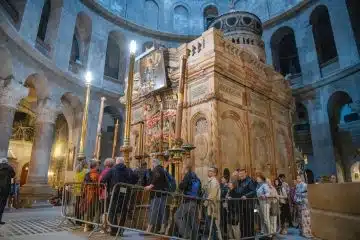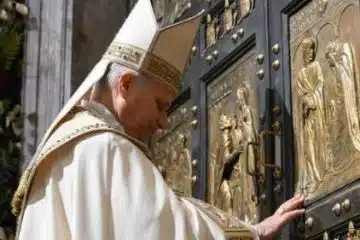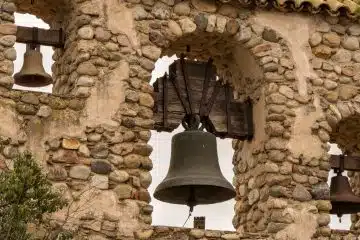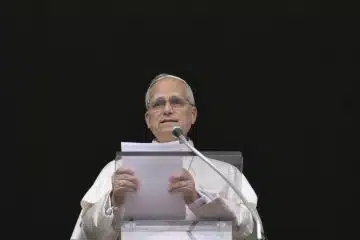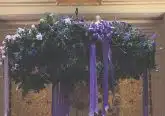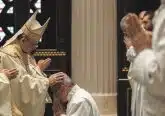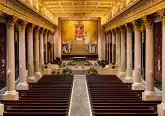A Place of Beauty
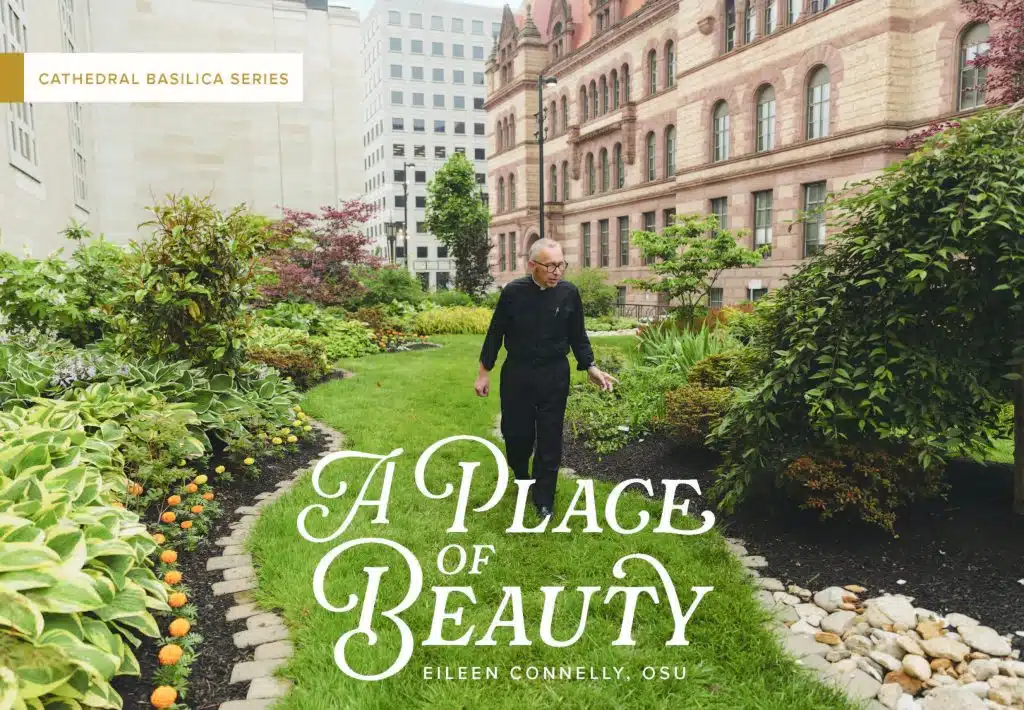
 French artist Augustin Frison-Roche said that “Everything beautiful comes from and speaks of God.”
French artist Augustin Frison-Roche said that “Everything beautiful comes from and speaks of God.”
Father Jan Schmidt, rector for the Cathedral Basilica of St. Peter in Chains, agrees. And while the structure’s art and architecture offer an awe- inspiring worship space, he wants the faithful to know that its gardens are also a place of great beauty, further representing the “importance of beauty in our faith; a way to see God and experience His presence. It’s a place of peace.”
When he arrived at St. Peter in Chains prior to his appointment as rector in 2017, Father Schmidt found the gardens filled with dead trees and unkempt grass. “There was a disheveled look to the place, and it wasn’t very welcoming,” he recalled.
As an avid gardener, he made its transformation his mission, courtesy of generous donors and discounts from local landscaping companies. He completed most of the physical labor himself with assistance from cathedral maintenance staff and parish volunteers.
Often found tending the grounds and the courtyard garden in the evenings and after Saturday morning Mass, Father Schmidt said, “I’m there weeding, picking off spent blooms, thinking about the next thing to be done.”
He selects plants and flowers with intention, most of them recalling the names of holy figures in the Church and some even referring to architectural features of St. Peter in Chains. One such is the perennial Acanthus mollis (bear’s breeches), whose beautiful leaves were the design pattern on
Corinthian columns like those found at St. Peter in Chains.
“They speak to the heavens and eternal life,” Father Schmidt noted.
The gardens also host a variety of roses, including Joseph’s Coat (white), Our Lady of Guadalupe (pink blend), and Angel Face (lavender). Marigolds, their name derived from Mary’s gold in honor of the Virgin Mary, were chosen both for their brilliant color and to honor the Blessed Mother. Dogwood trees represent Christ’s sacrifice and the redemption He provided for humanity; Christian legend holds that its wood was used to craft the cross upon which He was crucified, so that the dogwood’s features now reflect the Crucifixion.
Hostas are the largest non-tree species featured in the garden, said Father Schmidt, and the garden’s varieties include Stained Glass, known for its bright golden-yellow leaves, dark green margins, and veining; and Praying Hands, with glossy leaves folded together as if in prayer.
“We have quite a variety for a garden in an urban setting,” he noted.
The courtyard garden, with its fountain and benches, provides serenity amid the city’s hustle and bustle and is popular with people working downtown, who enjoy a quiet moment during the day. Father Schmidt hopes that a mosaic of St. Joseph and the child Jesus, matching the cathedral basilica’s interior mosaic on the sanctuary’s rear wall, will be installed on the courtyard’s wall, where it would be easily seen from the street. The peaceful area might then be named “The St. Joseph” or “Holy Family” Courtyard, he said.
Visitors can enjoy the cathedral basilica gardens anytime and the courtyard during business hours. Public tours of St. Peter in Chains that focus on its history and architecture are offered monthly on the second Sunday after 10 a.m. Mass, and private weekday tours can be arranged by emailing [email protected]. Visitors may also request tours of the gardens, Father Schmidt said.
“There is beauty and peace here—attributes of the God in whom we believe—and a sense of His presence,” Father Schmidt said. “That’s been my experience, and I invite others to share it.”
This article appeared in the July 2025 edition of The Catholic Telegraph Magazine. For your complimentary subscription, click here


